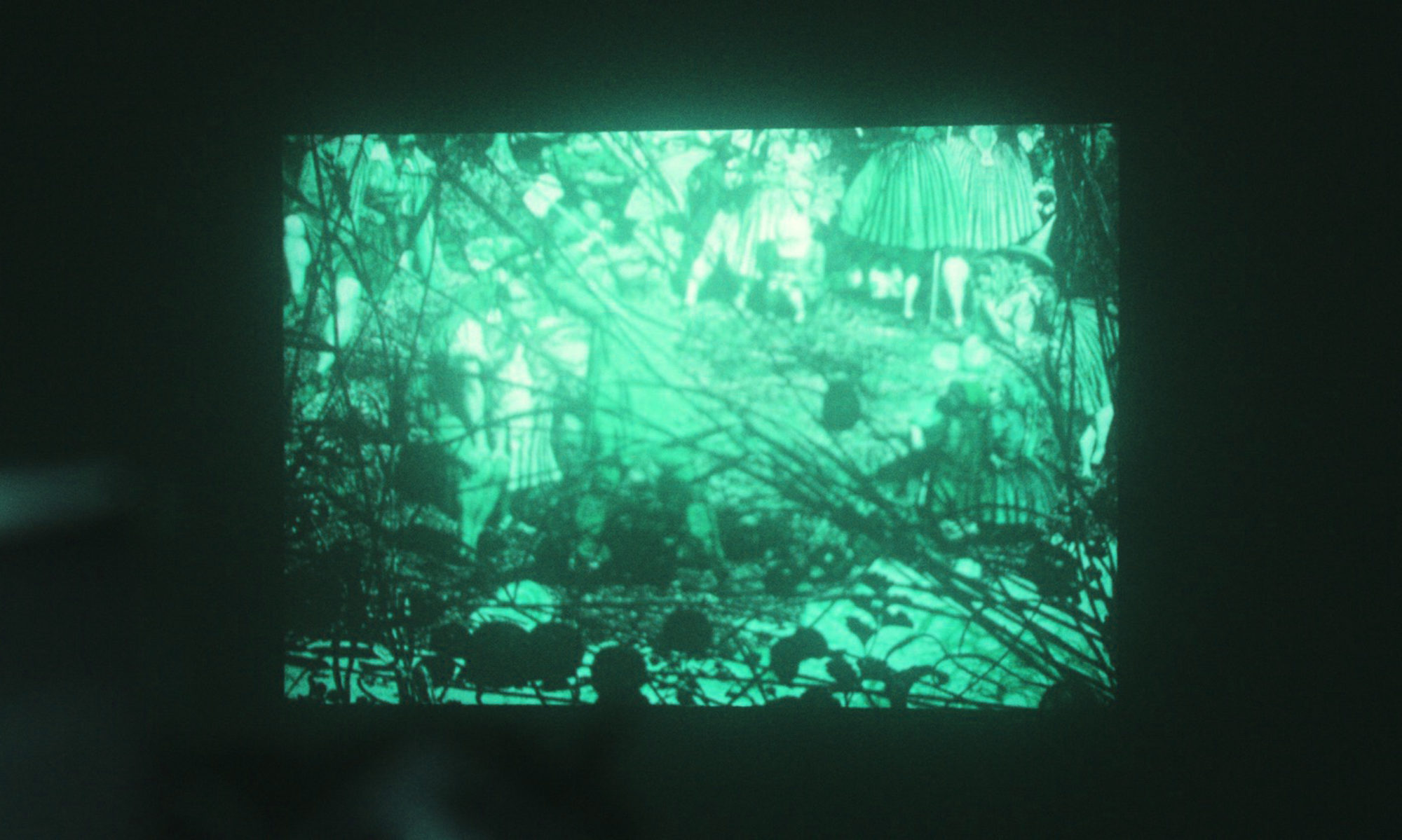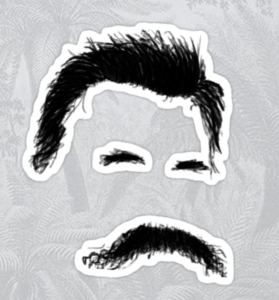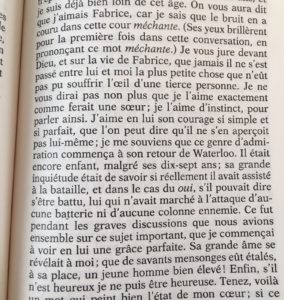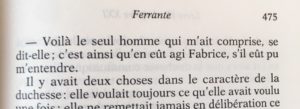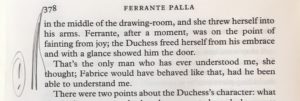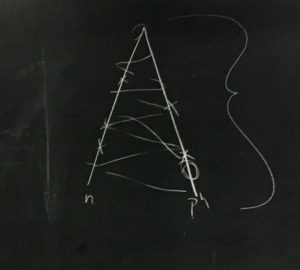My second espresso of the afternoon, comrades, and I am moved to start my reflections with a big question, What do we mean, historical consciousness? How about, “a way of knowing the past,” maybe an unilluminating paraphrase—but it does get the word “history” out of the way, temporarily, and might remind us of all the ways that the past is present, not only in the writing of history, but in art (especially the past of its making, a matter of style, as opposed to the past it represents) and in ritual (with its sense of the long sanction of its liturgies), as well as what we might call the natural past, the way age manifests itself in the physical world as abrasion, ruin, decay, etc. So our interest in the writing of history rides alongside these other ways that we recognize another time in our own. It is also potentially athwart them: history writing is not always respectful of the claims of ritual, in myth or doctrine, and indeed, not always of art, either; there is a project of demystification built into many versions of historicism. (Especially those that lay a claim to “realism.”) So, historical consciousness, of whatever kind, can come at a price. Must it?
And another very general reflection. Our interest in a new or a reformed historical consciousness implies a hope that to know the past better will make for a better future. We saw a whole range of approaches and attitudes to that question in White, who steers us through one crisis of irony (the eighteenth-century historians, and their abandonment of meaning or plot) into another (our own, and ditto). His hope was that by ironizing irony, by recognizing that it is itself a contingent position rather than an inevitable outcome, we might be able to reactivate some of the other available tropes, which guided the thinkers he most admired toward different varieties of historical optimism. What good can a better historical consciousness do us? It might offer the comfort of knowing that history bends towards justice, and galvanize us to act toward that ideal—whether or not our philosophy of history allows for individual agency to have historical influence. (Marx and Hegel, in their different ways?) It might liberate us from concerns about long time, about state and religion, and permit us to exfoliate the gifts of our own moment (Burckhardt?). There is a large question of whether historical consciousness is as it were active or passive, whether it implies or points to action, or to (artistically generative?) knowledge or awareness; and what the relation between the two might be. We know history can be put to desperately evil uses. When it is, is that a failure of historical consciousness? Might other modes mitigate fanaticism, for example, or model or provoke peace and justice?
Which is all just by way of saying, what ways of living and acting are implied by the varieties of consciousness that we are entertaining?
Right! Class this past week—I thought we did an especially thorough job with Lukacs; that article gained a lot of force for me as we read. Not least thanks to Greg’s opening wager that it cut a little close to his art-historical object-fetishism (if I may paraphrase!); and, as I think all of us would uncomfortably allow, to shared vulnerability to what Nietzsche might dismiss as a descriptive antiquarianism. Lukacs’ historical consciousness demands of epic narrative that it select the important details and shed the unimportant, where importance is a matter of the relation of narrated events and actions to the “motive forces of social development and their unremitting influence on even the superficial phenomena of life” (122). Description is leveling, and “contemporizes everything” (131), so is poor for doing the kind of history—history as vital change—that matters, that gets us somewhere. It was very interesting to test this, however swiftly, against the claims of Speculative Realism or Object Oriented Ontology, as that philosophical project is variously called; what good comes of the kind of attention that does away with the distinction between subjects and objects (or extends the franchise of the subject universally across existent things)? Is description potentially itself a mode of justice? One might set this question alongside Barthes, whose account of the “reality effect” entertains the object-in-novels that has nothing more or less than the real itself as its signified. (The real in novels, and perhaps in houses?—do you own anything that is there just to show that you belong to your time; that you are real?) The realist object, it should be said, is not a particular desideratum for Barthes. (He is more interested in what he elsewhere calls the punctum, one tributary of our term, the secret center of interest and pleasure in a photographic image, the occasion of the species of uncategoried pleasure he calls jouissance.) His realism still may be a mode of historicity more interested in presence than progress—and that perhaps considers presence to have more emancipatory potential than any emplotment could give us.
I hope the Jameson will come back. In some ways, his account of realism puts Lukacs and Barthes together, defining realism as the dialectic of narrative and affect, where affect is the present tense of feelings that have not been reduced to name (as the repertory of passions and emotions have).
But this is getting long and I want to say a few words about Ali Smith. We talked a bit about queerness and history—with Keene and Smith, especially, sexual variety and gender complexity seem to open a more capacious historical consciousness. Why? A question to keep active. Lee Edelman (No Future) and Jack Halberstam (In a Queer Time and Place) are working similar questions, and there’s a lot more writing behind them. Graham’s sense that there is something prophetic in the position of bothness ought to stay with us. There is Tiresias, and also Woolf’s transhistorical Orlando, moving from man to woman (and back) and woman to man, respectively. If not back and forth in gender, why not back and forth in time? Smith may take a step farther with Francesco and George, who are, in their different ways, possibly both at once.
I’ll say a few more words about that basic problem of the relationship between ANALOGY and FORGIVENESS in the book. For the book is pervasively self-referential, so much correspondence of image and event both within its parallel narratives and between them, and it seems to argue that there is something redemptive in that fact about the world, and something beneficent in recognizing it. Why should interconnection itself, including historical interconnection, conduce to the good?
Let’s say that it is a basic wager of the book that a world so structured is a better world than one governed by a sequential, causal, not to say historicist logic. In the most general sense, such patterns of connection mean a) that things (and people) are never truly lost, for they ripple and recur; b) it is as easy to go backward as to go forward, and so no error or injustice or loss is permanent; and c) there is a recurring affect of wonder at coincidence, and play in its discovery, that makes for a kind of antidote or solvent to grief and anger. Such a world tends towards monism, towards everything seen all at once. But the novel, in its two parts, holds that happy metaphorical apocalypse at bay, in favor of an ongoing, miraculous perception not of one but of both, in countless forms. (Another way of answering Jeewon’s question, why no free indirect discourse, which would be something like a completed synthesis of first and third person, rather than a dialectic?—though I could imagine Smith making use of it.)
There is a corresponding promise in Christian doctrine: that Christ’s bothness, man and God, blood and wine (water and wine), is of the essence of His power to forgive, to sacrifice, and that his death and assumption may be paradigmatic of other redeemed losses (and of the rising/falling pattern throughout the book, as with the helical helicoptering maple seeds and their sprouting). So BOTHNESS is a condition of REDEMPTION. The book’s transposition of that sacrifice from a single religio-mythico-historical figure to the sempiternal sacrifice of mothers is one of its strongest moves. As Nietzsche would agree, there is potentially paralyzing guilt for the surviving children in both cases; we must learn to forgive the sacrificer for leaving us, forgive ourselves for hating Him/her, etc.
Something like this recognition allows for the transformation of George’s attitude to history: “History is horrible,” she says to her mother: “It is a mound of bodies pressing down into the ground [not rising]…George is appalled by history, its only redeeming feature being that it tends to be well and truly over” (248). And then later, after her death, “What if history, instead, was that shout, that upward spring, that staircase-ladder thing, and everybody was just used to calling something quite different the word history?” (304-305).
Anyway—I could keep going and going, and that is the point (the point: that great pun for Smith, a singularity with multiple meanings; so, really, a node, as every property in the book is a node). Let me just try to put it in a bigger perspective before this third espresso runs out. Does White have a way of thinking about all this? Not an emplotment, I don’t think; we observed the paucity of plot, and even if there is something comic for George and H, and perhaps for Francesco released from his purgatory, both comedies are dominated by pathways other than the causal/chronological. Nor a mode of argument, which is a unidirectional business as much as plot is. Among the tropes, perhaps metaphor? Insofar as that is White’s figure of both-andness. If How to Be Both is basically metaphorical in its orientation to history, can we link it, for example, with Nietzsche’s ultimate image-frolic? Or Marx’s utopia? It lacks the self-assertion of the former. It does have an interest throughout in equal pay, and asks tough questions about talent and worth. (The conundrum: should everyone be paid equally, or should the better artist be better paid for the better painting? A tough one for us Princeton meritocrats.)
I am myself very sympathetic to Smith’s way of seeing the world, or her book’s, at least. I do think it undercuts the stark, essentialist difference-making upon which unjust acts of scales large and small depend. I feel the wonder of the book’s generous recognitions and I feel better for it, more alive, alert, and generous, forgiving. (It is almost Buddhistic—though bothness, again, is not oneness.) There is still a question whether How to Be Both is answerable, as a mode of historical consciousness, to tragedy, to the worst of the past. The book does not test itself against crime, let alone against crisis or horror, only against loss. And as I said at the end of class—what is the model of this extraordinary, miraculous connection for its own sake, if not the fantastical connectedness of the internet and global capital? Which, um, surely bend to the good if they are only allowed to flourish freely? Don’t they? Don’t they?
And then I’ll restate that final thought, a big one I haven’t processed, but am wondering about. The particular good of studying the past as a kind of alterity is that it cannot trade with us: we cannot exploit it, at least, not the way we can our historical peers. The past stands outside the economy, or can, or should. A useful historical consciousness then would have to recognize that the past happened and that however hard it may be to know, we cannot change it.
